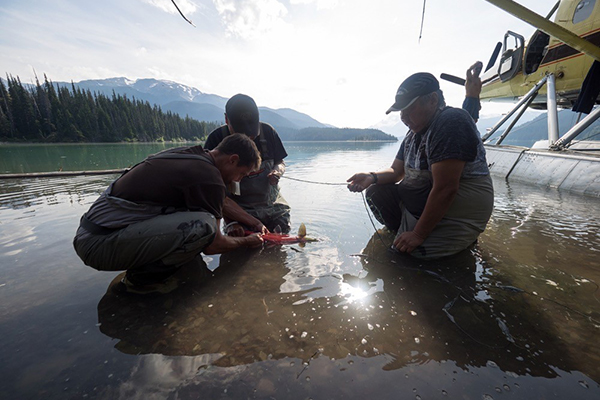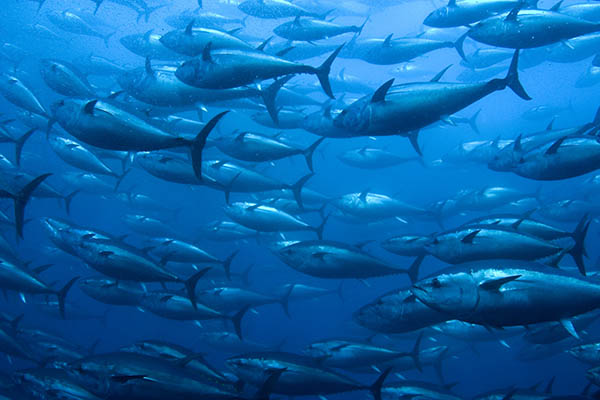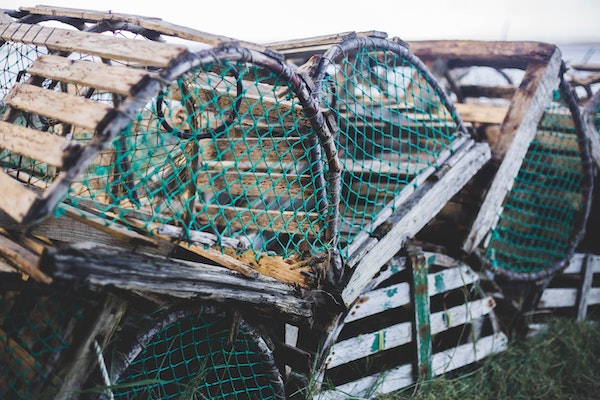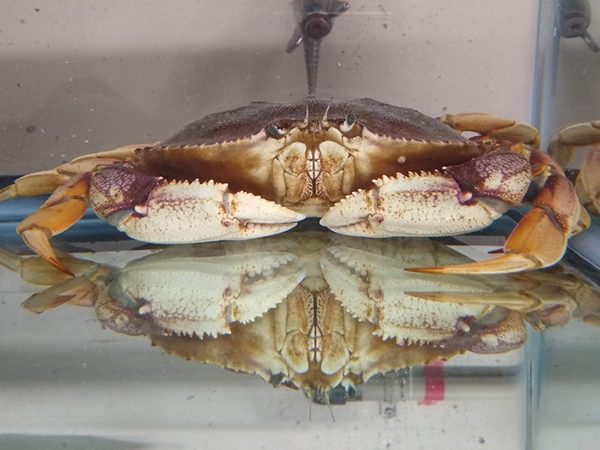SFU/DFO study explores how climate change affects the size of juvenile sockeye salmon in B.C.

Juvenile sockeye salmon in British Columbia (B.C) are growing larger than they did 100 years ago due to climate change, according to a new study led by Simon Fraser University (SFU) in collaboration with Fisheries and Oceans Canada (DFO).
Using modern genetic tools, researchers analyzed fish scales collected from fisheries since 1913 to reconstruct historical growth patterns in juvenile sockeye across various lakes in the Skeena watershed. The century-old fish scales provided valuable insights into how salmon populations are adapting to climate change in the northern part of the province, as well as how maintaining the integrity of freshwater habitats may help salmon adapt to warming temperatures.
The study, published in Global Change Biology, found that the annual freshwater growth of juvenile salmon is substantially higher in recent years than it was a century ago – by about 35 percent. It also revealed that, while the annual growth of juvenile sockeye has increased for nearly all populations, fish from relatively deep lakes are growing faster than ones from shallow lakes.
“Particular lake habitats play an important role in modulating the effect of high summer temperatures, resulting in enhanced growth of these important fishes,” said Michael Price, SFU biological sciences Liber Ero Postdoctoral Fellow.
As cold water fishes, salmon are sensitive to warming temperatures. Price explained that warmer temperatures in lakes can help fish grow faster both by increasing their metabolism, which can help them capture more prey and by increasing the amount of food production in those habitats.
But this is only true up to a point. When water temperatures are higher than salmon’s “thermal niche,” they can become stressed and fail to thrive.
Some fish species are shrinking. Is global warming to blame?
The researchers found that even though the overall air temperature is similar throughout the watershed, deeper lakes warm up more slowly than shallow ones. When the surface of lakes gets too warm for the salmon, the deeper water in these lakes acts like a cool hideout, offering a refuge for the young fish.
As a result, relatively deep and characteristically cold nursery lakes once considered poor producers of salmon now appear to be increasing in their importance. Fish in these habitats are likely to thrive in the near term under forecasted climate change.
Price said that maintaining the integrity of a variety of freshwater habitats will help foster a diverse climate response portfolio for important fish species, which in turn can ensure that salmon watersheds are resilient to future environmental change.
“Our work suggests that habitat diversity provides a spectrum of opportunities for salmon to adapt to future increases in temperature associated with climate change,” said Price.
Now that you've reached the end of the article ...
… please consider supporting GSA’s mission to advance responsible seafood practices through education, advocacy and third-party assurances. The Advocate aims to document the evolution of responsible seafood practices and share the expansive knowledge of our vast network of contributors.
By becoming a Global Seafood Alliance member, you’re ensuring that all of the pre-competitive work we do through member benefits, resources and events can continue. Individual membership costs just $50 a year.
Not a GSA member? Join us.
Author
Tagged With
Related Posts

Fisheries
Some fish species are shrinking. Is global warming to blame?
Some fish species are shrinking but future research must determine if overfishing, global warming and food availability are responsible.

Responsibility
Study: More than 90% of global aquaculture faces substantial risk from effects of climate change
Aquatic food producers are vulnerable to the effects of climate change, with USA, China and Thailand at the most risk, a UCSB study finds.

Fisheries
Maritime Canada’s lobster population is strong. So why are scientists worried?
The lobster population in Canada’s Maritime region falls within the healthy zone, but scientists worry about the effects of climate change.

Fisheries
Could losing a sense of smell explain why crab populations are declining?
A study finds ocean acidification causes Dungeness crabs to sniff less frequently, which may contribute to the crab population collapse.



